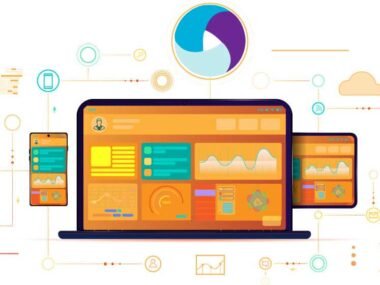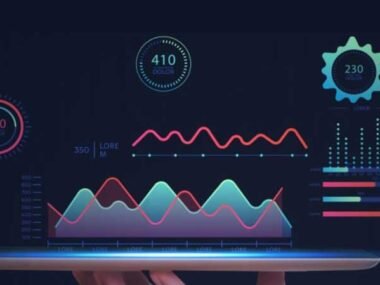DeepNude AI apps are artificial intelligence tools that use machine learning to digitally remove clothing from photos and generate synthetic nude images. These apps have grown in popularity because they can quickly produce very realistic results, leading to a mix of curiosity, controversy, and ethical debate in 2025. The technology often uses algorithms called GANs, which help make the edited images look as real as possible.
Many users are drawn to these apps for different reasons, but the conversation around privacy, legality, and consent is bigger than ever. Some want to see how the technology works, while others worry about its use for harmful purposes. For those seeking a roundup of best deepnude AI apps, helpful guides show which options are available, how they work, and important safety features.
With new features and updates arriving quickly, learning about DeepNude AI apps is important for anyone interested in digital trends, technology, or online privacy. The ways these tools are being used in 2025 highlight both the possibilities and risks that come with advanced AI.
What Are DeepNude AI Apps?
DeepNude AI apps use advanced artificial intelligence to digitally remove clothing from photos. These apps rely on machine learning and computer vision to edit images in a way that makes the changes look very real. The technology has become more accurate and is now available on different devices and platforms.
Definition and Technology Behind DeepNude AI
DeepNude AI apps are digital tools that use deep learning to alter images, mainly by removing clothing from photos of people. The technology uses large datasets to train neural networks, which helps the app predict what the body might look like under clothing. This process creates new, computer-generated pixels and blends them with the original photo.
Most apps follow these steps:
- A photo is uploaded by the user.
- The AI scans the clothing area.
- Using trained models, it generates a new layer beneath the clothes.
- The final image tries to look realistic while keeping the person’s face and pose the same.
Machine learning and image processing have made these changes smoother and more convincing. The final results often look like original, untouched images.
How DeepNude AI Apps Have Evolved Since 2025
Since 2025, DeepNude AI apps have become more advanced and are now available on more devices. Web-based platforms, mobile apps, and even messaging apps offer these features. The apps are faster at rendering images and often need less user input than earlier versions.
They have also focused on speed and processing. Many modern apps can create results in just a few seconds, even on smartphones. Some options have free trials, while others charge for high-resolution results or special features.
The technology is now harder to regulate, as it spreads through unofficial downloads and encrypted chats. Easy access has raised new privacy and legal problems. More safeguards and warnings appear, but the core functions are widely used.
Key Features and Functionalities
Most DeepNude AI apps in 2025 share several key features:
- Photo Upload: Users choose any image and upload it to the app.
- Automatic Processing: The AI edits the photo with little or no user involvement.
- Result Quality: Realistic image generation is common, with improved skin textures, lighting, and details.
- Privacy Tools: Some apps provide private or temporary storage, or delete images after processing.
A table of typical functions:
| Feature | Description |
| Auto Detection | Finds clothing regions |
| High-Res Output | Supports detailed images |
| Fast Rendering | Produces results in seconds |
| Age Warnings | Alerts for potential misuse |
Apps now often include simple interfaces, quick results, and some attempt at protecting user privacy. However, image use is mostly at the discretion of the user, with few barriers in place.
Applications and Impact of DeepNude AI Apps in 2025
DeepNude AI apps have changed how people interact with digital images. These tools raise new questions about technology’s influence on privacy, law, and society.
Common Use Cases in 2025
People use DeepNude AI apps for different purposes. Some use them for private entertainment or curiosity, while others use them for pranks or to harass others. These apps are also sometimes used in creative projects, such as digital art or parody.
In some cases, the technology is misused to make fake nude images for blackmail or revenge. Such actions can lead to real harm for the individuals pictured. More advanced apps in 2025 make it much easier and faster to change images than in previous years.
Law enforcement and cyber specialists have reported more cases of threats using these AI tools. This includes scams, sextortion, and online bullying. The availability of this technology on various platforms has increased the number of incidents reported globally.
Ethical and Privacy Considerations
The use of DeepNude AI apps brings up serious privacy concerns. People may have their images altered and shared without their knowledge or permission. These actions can lead to embarrassment, reputation damage, and emotional distress.
There are growing debates about whether using these tools, even for personal use, crosses an ethical line. Many argue that it goes against the right to control one’s own image. The ease of use of these apps means that almost anyone with an internet connection can create fake images.
Some users may not fully understand the harm these fake images can cause. The blurred line between real and fake photos makes it hard to correct misinformation. Privacy advocates warn that the risks are still growing as the technology gets more advanced.
Regulation and Legal Responses
Governments and courts in many areas have started updating laws to address the rise of DeepNude AI apps. There are new rules in some places that make it illegal to create, share, or possess these fake nude images without consent. Penalties can include fines or jail time, depending on the country.
Law enforcement is also developing better tools to detect and trace altered images. Cybercrime units are increasingly trained to investigate and act on reports of DeepNude AI misuse. Some platforms have set up reporting tools so users can ask for quick removal of fake content.
While laws exist, it can be difficult to enforce them. The global nature of the internet makes it easy for users to hide their identity or location. Still, there is growing pressure for stronger international cooperation to limit misuse.
Social Perception and Cultural Influence
Public opinion about DeepNude AI apps is sharply divided. Some see them as just another step in entertainment and digital art. Others view them as dangerous tools that promote harassment and privacy breaches.
Media reports in 2025 have raised awareness of the risks linked to these apps. Many people now know that realistic fake images can easily be made and shared online. This has led to fear and mistrust, especially around personal online photos.
Cultural norms about privacy and consent are being discussed more than before. Some communities have started programs to educate people about digital risks. These efforts are meant to help people understand what DeepNude AI can do—and how to protect themselves.
Conclusion
DeepNude AI apps have changed how people think about privacy and images online in 2025. These tools can quickly generate fake images and are now part of many online risks.
Users and lawmakers face challenges as technology moves forward. Many worry about privacy, consent, and the misuse of these apps.
Main Points:
- DeepNude AI apps use advanced machine learning
- They raise new legal and ethical questions
- It is important for users to be aware of the risks
Clear steps to protect personal images and stronger actions from tech makers may help stop unwanted use. Respect for privacy remains a major topic as AI tools become more common.










